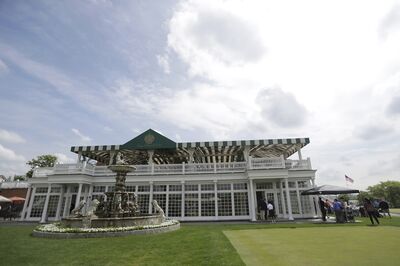Wacky days!
For Immediate Release...and again, revel in the even-keeled tone used by Acushnet CEO David Maher, a nice change from Wally Uihlein's alarmest rhetoric. I don't agree with his points but Maher presents his rebuttal in a way suggesting he would be a productive voice at any distance discussions.
Distance Study 2017: Equipment Regulations Remain Effective
FAIRHAVEN, Mass. (March 5, 2018) – As a proud stakeholder in the game, Acushnet Company is deeply committed to golf’s future health. Following today's publication of the 2017 Distance Report by the USGA and The R&A, it is important to ensure this topic is considered with balance and through a wide lens.
"As a leader in the golf equipment industry, our team is conditioned to evaluate data to best understand contributing factors and root causes," said David Maher, CEO and President of Acushnet Company. "It is with this intent that we analyzed the 2017 Distance Report, and our findings continue to support the fact that equipment regulations have been effective.
“A closer look into the numbers in the Report underscores the complexity of making any meaningful year-to-year comparisons,” continued Maher. “There were several contributing variables in 2017, including course selection and set-up, agronomical conditions and weather, which need to be considered when assessing the data."
It's only been sixteen years since the Joint Statement. Twenty years before jumping to conclusions?
Below is a sampling of key findings from our research that impacted distance results in 2017:
• At the 33 PGA Tour events conducted at the same venue in 2016 and 2017, where data was collected, the average driving distance increased +0.5 yards. At the eight events held at new venues in 2017, the average distance increased +8.0 yards.
Imagine if there had not been a new Pro V1 flying new distances (as advertised) in 2017, there might have even been a dip in distance!
Oh, and about those major courses where the driving distances were longer: the driver was freely and regularly used at Erin Hills and Quail Hollow. Not much lay-up in those two courses. Last I heard, the golf ball, when hit with driver, goes longer than with a three-wood or iron.
• Of these 33 PGA Tour events conducted at the same venue, 15 tournaments had a decline in average driving distance with one event flat to prior year. This highlights the year to year variability in distance.
Don't make anything of those charts over many years where the lines start low on the left and rise to a higher spot on the right.
• The major championships conducted at new venues represented one-third of the total average driving distance gained in 2017: U.S. Open (Erin Hills vs. Oakmont +20.4 yards), Open Championship (Royal Birkdale vs. Royal Troon +8.1 yards) and PGA Championship (Quail Hollow vs. Baltusrol +7.0 yards).
It's amazing what happens when a field of top players are free to hit driver off the tee instead of finding their play restricted by pinched landing areas.
• The 2017 Masters average driving distance declined -0.4 yards.
Take away the grainy fairway cut pushed down toward the tee and we'd actually get to see agronomy play a roll in distance averages.
• Of the 25 Web.com graduates in 2016, 24 had shorter average driving distance on the 2017 PGA Tour, with an average decrease of -6.6 yards. For the years 2015 to 2017, 74 of the 75 graduates had shorter average driving distance on the PGA Tour the following year. This can be attributed to course set-up.
Yes, course setup may certainly play a roll in reducing the number of times players hit driver.
“In any given year there are variables that impact distance, and any movement as in 2017 is not suddenly indicative of a harmful trend,” said Maher.
He's not wrong about 2017. It started long ago.
“We continue to believe equipment innovation has benefitted golfers at all levels, and our analysis of the 2017 Distance Report affirms that the USGA and The R&A have effective regulations in place to ensure the game’s health and sustainability. We look forward to continued dialogue with the governing bodies and stakeholders as we seek to position the great game of golf for future success.”
Wally, Wally, Wally...not even a technophobic media reference! You sure you picked the right guy?



















